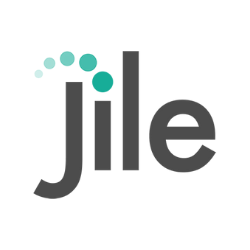Adopting Agile during the pandemic

The Agile methodology is not new. The technology sector has used it for decades to improve productivity and motivation in the workplace, enhance product quality, and speed to market. In recent years, a host of companies in other sectors have adopted Agile to rapidly iterate and deploy solutions. This is why companies are choosing Agile during COVID-19 specifically.
Adopting Agile during the pandemic has helped organizations everywhere overcome significant challenges. To respond to fast-changing consumer behaviour and demand patterns, some companies rushed to implement Agile practices and operating models to solve specific issues— reconfiguring strategy, hierarchy, operations, labour, and technology toward creating values and opportunities.
While Agile evolution has made forays much earlier, the vast majority of organizations have not deployed the methodology at scale: just 10 per cent of leaders said they have scaled up Agile methodologies across their organizations.
To reach the maximum potential of a business, especially, by adopting Agile during the pandemic, a set of principles need to be employed that are aimed at deriving maximum benefits from all organizational procedures. Depending on the nature of a business’s processes, Agile methodologies can be adopted if conditions permit.
Agile has become super popular now since it was born out of software development in 2001 with the release of the Agile Manifesto. Companies seeking efficiency, innovation, and greater customer satisfaction have prioritized Agile work not just for IT departments but also for functions across the enterprise. Businesses that embrace Agile comprehensively throughout their organization tend to enjoy maximum success.
Why companies are choosing Agile during COVID-19
Change and Innovation – The key advantage of the Agile methodology is that it acknowledges the reality of projects — things will change constantly. Adhering to Agile-friendly project management frameworks keeps changes from disrupting a project and turns them into a bonus, both for the project's outcome and the team.
Reinvigorate operations – The principles of Agile enable effective collaboration among coworkers. They also place emphasis on facilitating smooth communication with stakeholders by taking their views into consideration. The iterative nature of Agile gives managers greater control over projects and their outcomes. All of this allows organizations to modify their operations to reduce costs, drive flexibility, and improve responsiveness to achieve Agile execution.
Prioritization – Agile enables you to work within smaller time frames, known as sprints. Customer satisfaction is the primary objective of Agile. Prioritizing work directly correlates to surpassing customer expectations, as a greater quality of work can be delivered. Enabling effective collaboration is more than just “working together.” It means sourcing ideas, evaluating approaches and discussing among team members how they will share work.
Productivity –Requiring teams to get the green light from their superiors can cause days or weeks of delay since communication can be time-consuming. Back-and-forth communication among remote workers occurs less frequently than when people work together in the same physical space. Adopting Agile methodologies helps you streamline your operations. Feedback loops need to be minimized, especially when teams work remotely. These teams must be empowered to make decisions that drive quick results.
Challenges faced by Businesses During Agile Adoption
Communication gaps – Agile can be difficult to implement when there is no proper flow of communication in the organization. Team members must be fully empowered to assume full responsibility for their work and avoid the habit of relying on others. Project managers need to motivate their team to take up the initiative to meet their tasks head-on without needing approval at each stage.
Resistance to change – Changing the way people think and operate is never easy. The habits, beliefs, and principles held by an organization are deeply rooted. When there is an attempt to implement Agile transformation, employees and management are typically never keen to change the way they’ve always been working.
Improper adoption – Since the Agile manifesto is over 20 years old, it is crucial to know the extent to which it must be implemented. A rigid adoption is unfeasible, as there are principles that could seriously conflict with contemporary work practices. For instance, according to Agile, the most efficient and effective method of conveying information to and within a development team is face-to-face conversation. This is at odds with what remote work stands for.
COVID-19 has Accelerated Agile Adoption
Technology – COVID-19 has accelerated digital adoption. The increasing importance of technology to work, play, and stay connected has shaped new digital demands. As most nations are in the process of recovering from the pandemic, there is great value for businesses in the technology space to capitalize on.
E-commerce – The pandemic highlighted the fact that E-commerce services have become indispensable. With wide-reaching delivery networks, E-commerce platforms around the world supplied provisions and essential goods and services to their customers. When social distancing is the norm, E-commerce services make the world go round. The principles of Agile enable E-commerce businesses to satisfy their customers by answering their needs.
Marketing – The pandemic has reinforced what we already know: brands must always communicate in very local and specific terms, targeting specific consumers based on their circumstances and what is most relevant to them. Digital marketing channels experienced a boom during this time since overall time spent on connected devices among people around the world skyrocketed. Agile adoption allows companies to be in a position where they are capable of maximizing any opportunities that come their way.
Conclusion
Adopting Agile principles during the COVID-19 pandemic has given numerous organizations a whole new lease on life. They can do much more than survive during trying times, and they can thrive. Accelerating operations, improving productivity, and preparing enterprises to cope with change are just a few ways in which Agile has helped organizations.
Jile allows teams to collaborate and get work done in a simpler yet effective way that saves time and iterations, while able to manage projects and deliver products faster to the market. With a variety of frameworks and processes, including Scrum, Kanban, Disciplined Agile (DA), Large Scale Scrum (LeSS), Agile Portfolio Management, and more, Jile provides teams and organizations to choose a way of working that is convenient and result oriented. Check out our entire Agile portfolio to find out what we can do to help enterprises embark on their agile journey and discover a smarter way of working.
Thanks for subscribing to our latest blogs, thought leadership and other product updates!
Read our Privacy Notice to know more. You can opt-out of all communications anytime.
